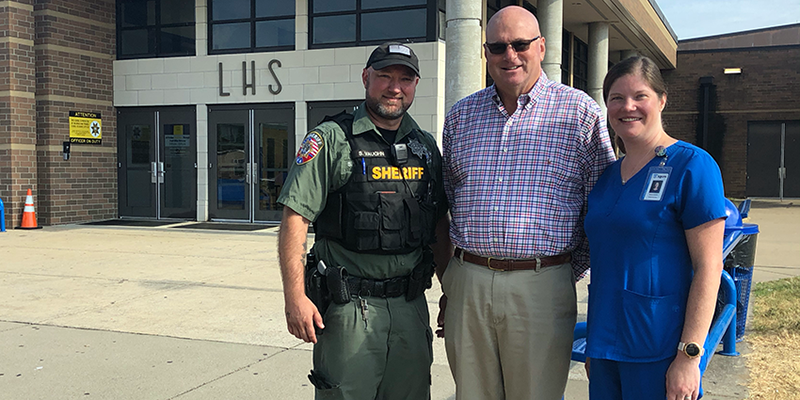If you've ever wondered why schools conduct safety drills multiple times each year, just ask La Vergne High science teacher Garry Gannon.
He literally owes his life to the emergency training procedures that are routinely practiced by both employees and students.
Back in September, Gannon was talking with another teacher in the cafeteria when he felt dizzy and sat down.
"That's about all I remember until I got to the hospital," Gannon recalled.
Thanks to the quick actions of School Resource Officer Shane Vaughn and school nurse Rachel Bullard, Gannon is alive today to tell his story.
While doctors are still determining exactly what happened, they know that Gannon had a cardiac event — his heart stopped beating — and it was the CPR performed by Vaughn and Bullard that kept him alive.
Since that fateful day, Vaughn and Bullard have been recognized repeatedly for their actions, rightly so.
Channel 2 News and Hyundai of Cool Springs selected the two for their monthly "Hero" award, which is reserved for public servants who go "above and beyond the call of duty."
The news outlet aired a feature story about them this week.
Local radio station WGNS also recognized Vaughn for his part in the response, and he earned a "Life Saver Award" a couple of weeks ago from Sheriff Mike Fitzhugh.
Vaughn is a veteran deputy with the sheriff's office, having served nearly 12 years. About seven years ago, he moved from patrol to the School Resource Officer division and came to La Vergne High School.
"I love it here," Vaughn said. "Mr. Ash is a great guy and runs a great school."
It's the third time Vaughn has been credited with saving a life while on the job.
His first was when a former assistant district attorney went into cardiac arrest at home. Vaughn performed CPR all the way to the hospital and the man was revived just before arriving.
He also saved a woman who had attempted suicide.
As for Bullard, it's her first year as a full-time nurse with Rutherford County Schools, and the incident with Gannon occurred during her first few weeks at La Vergne High.
She previously worked for many years as an intensive care nurse in a hospital setting.
She credits her background and the emergency training of others at the school with ensuring a positive outcome with Gannon's incident.
"I couldn't have asked for a better team," Bullard said. "You have people to lean on and you have people who know what they're supposed to be doing."
Both Vaughn and Bullard said their training kicked in as soon as they heard there was a "Code Blue," which is the term used in schools for a medical emergency.
They rushed to the scene, and their training took over.
"I remember looking at her and saying, ‘We're about to do CPR," Vaughn said, "and she looked at me and said, ‘OK, let's go.'"
Gannon returned to school after several days, equipped with a heart monitor so doctors could further study his condition. Gannon survived esophageal cancer four and a half years ago, and the radiation treatment may have damaged the nerve receptors for his heart, he said.
Since returning, his student have been real protective of him, he said.
In one of his classes, for example, he was telling students they needed to stop talking and get back to reading their textbooks.
That's when one of his students spoke up.
"This kid said, ‘Mr. Gannon, it's not worth getting worked up over,'" Gannon said, laughing.
He's known Officer Vaughn for several years, and also nurse Bullard through a family connection. He's grateful to both of them for saving him.
"They did a good job," Gannon said.
Vaughn added: "It feels good to see him walking the halls."
Bullard agreed.
"Absolutely," she said.













